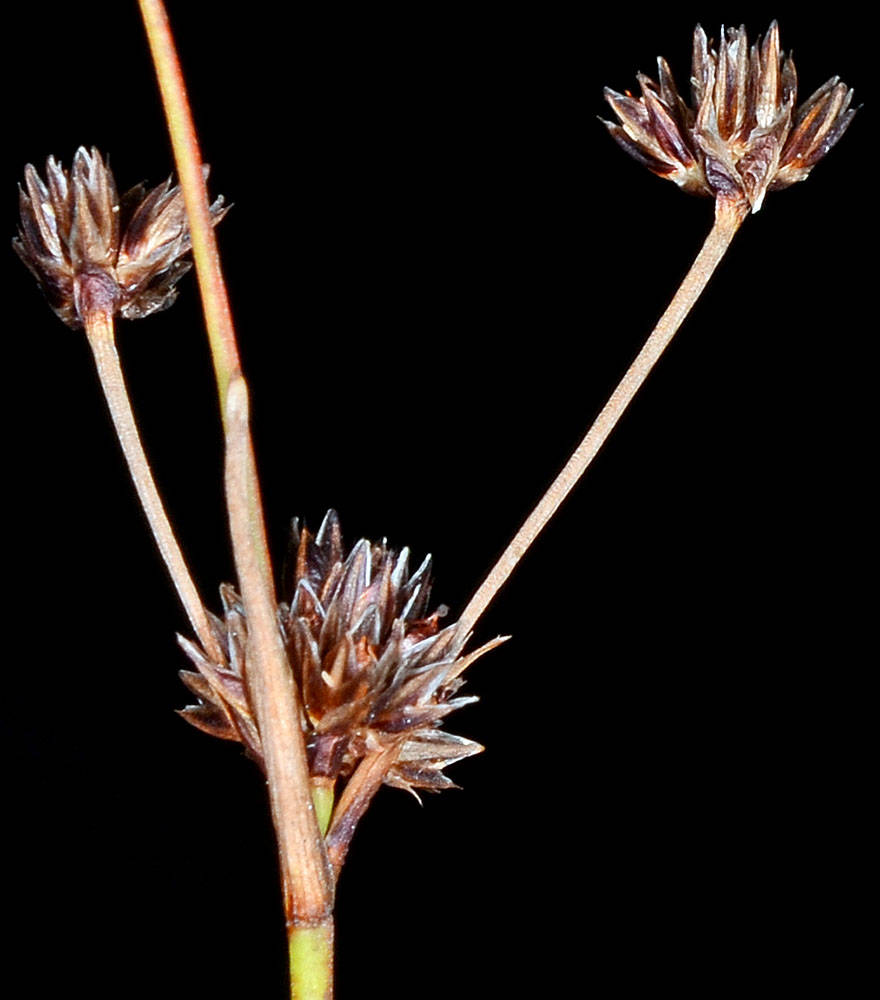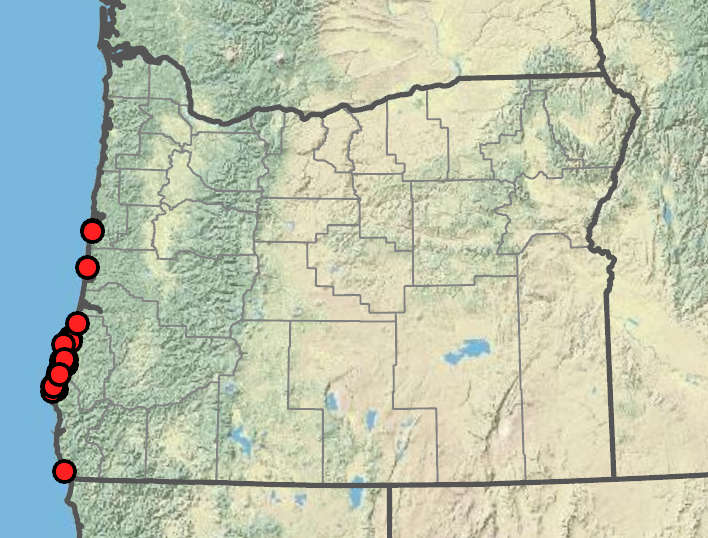|
flat-leaved rush, New Zealand rush
|
| Plants perennial, rarely annual, 1–50 cm tall, cespitose, branching, base without tubers. |
flat; grass-like; auricles absent. |
1–35 clusters; clusters 3–10-flowered, sometimes bearing leafy bulblets; inflorescence bracts inconspicuous, membranous; shorter than or equaling inflorescence. |
tepals 6, 1.8– 3.2 mm, dark brown to black; smooth; stamens 3; filaments 0.8–1.1 mm; anthers 0.4–0.6 mm, yellow; style 0.2–0.3 mm. |
elliptic to ovoid; shorter than or equaling the tepals, brown to dark brown, 1-chambered. |
0.3–0.45 × 0.2– 0.3 mm, reticulate, apiculate. |
|
|
|
| |
Muddy or sandy shores, sometimes in shallow water, ditches, cranberry farms, peatlands, damp dune hollows. 0–50 m. Est. CA; HI, South America; Australia, Ireland, New Zealand. Exotic. Juncus planifolius was first collected in Oregon in 1988 and is rapidly spreading. It is native south of the equator. |
Flora of Oregon, volume 1, page 283
Peter Zika |
J. acuminatus, J. anthelatus, J. articulatus, J. balticus, J. bolanderi, J. brevicaudatus, J. breweri, J. bryoides, J. bufonius, J. bulbosus, J. canadensis, J. capillaris, J. capitatus, J. compressus, J. confusus, J. conglomeratus, J. covillei, J. diffusissimus, J. drummondii, J. dudleyi, J. effusus, J. ensifolius, J. ensifolius x Juncus nevadensis, J. exiguus, J. falcatus, J. filiformis, J. gerardi, J. hemiendytus, J. hesperius, J. howellii, J. inflexus, J. interior, J. kelloggii, J. laccatus, J. lescurii, J. longistylis, J. marginatus, J. mertensianus, J. mexicanus, J. nevadensis, J. occidentalis, J. orthophyllus, J. oxymeris, J. parryi, J. patens, J. pelocarpus, J. ranarius, J. regelii, J. saximontanus, J. supiniformis, J. tenuis, J. tiehmii, J. torreyi, J. triglumis, J. trilocularis, J. uncialis |
|

